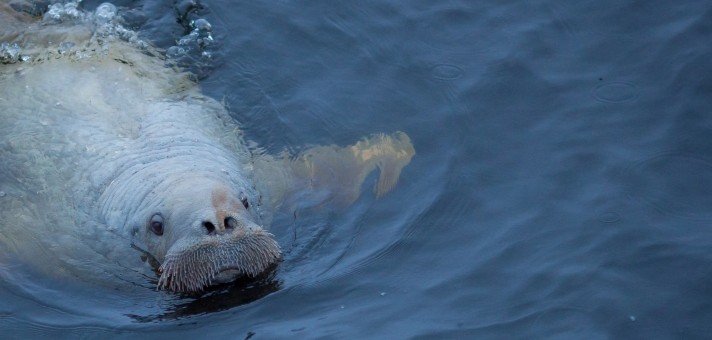Head of the Laboratory Ph.D. (Biology) Alexander G. Dvoretsky
BRIEF HISTORY
From 1935 when the Murmansk Biological Station was founded in Dalnie Zelentsy settlement until the present day benthic studies are one of the top research lines in hydrobiological studies of MMBI RAS. Zoobenthos Laboratory it the assignee and successor of the traditional directions in research on bottom invertebrates (zoobenthos). The investigations were initiated by such famous hydrobiology scientists as K.M. Deryugin, G.A. Kluge, L.A. Zenkevich, V.V. Kuznetsov, E.M. Kreps, P.V. Ushakov, Yu.I. Polyansky, and others.
In the 1960-1970s, a pioneer diving method was applied by M.V. Propp. A research group under the leadership of V.E. Dzhus conducted engineering of special underwater vehicles for macrozoobenthos study. Since the beginning of the 1980s experimental works were in rapid progress. Breeding and cultivation opportunities of urchins, amphipods, and mussels of the Barents Sea are studied as well as the adaptive capacity of mussels as pollution indicators. Since the second half of the 1980s, studies on the effect of bottom trawling on the Barents Sea benthos were conducted. In 1995, a regular monitoring of the Kola Transect with standard quantitative methods was performed.
THE BASIC FINDINGS ARE:
- A fundamentally new concept of biomonitoring - a continuous biological monitoring - was developed.
- The laboratory specialists have studied breeding strategies and production of abundant zoobenthos species from the Murman coast of the Barents Sea.
- A biogeographical analysis of the invertebrates’ composition was carried out for the coastal zone of the Barents and Kara Seas, and off coasts of the Arctic archipelago.
- Five new to science species of bivalves, polychaetes and bryozoans from marine environments of the northern part of the Kola Peninsula were discovered and described.
- In the Kara Sea, a representative of the snow crab Chionoecetes opilio species was first discovered. It has likely got there from the eastern part of the Barents Sea, where there is a stable self-reproducing population of this invasive species.
- The dynamics of the red king crab population in Dalnezelenetskaya Bay (the Barents Sea) was estimated as well as its impact on bottom communities.
- Experimental studies examined the resistance of red king crab to the temperature and salinity, levels of hormones in hemolymph, macrosymbionts and crab fouling organisms.

- biodiversity and structure of benthic communities of the Barents Sea and adjoining water areas;
- northern and southern seas: biology and ecology of benthos and its adaptation mechanisms;
- the red king crab biology and ecology, and estimation of its impact on native habitats.
Zoobenthos laboratory employees:
Dvoretsky Alexander G.
Lyubina Olga S.
Frolov Aleksander A.
Zenzerov Victor S.
Gudimov Aleksander V.
Frolova Elena A.
Pavlova Liudmila V.
Panteleeva Ninel N.
Garbul Evgeny A.
Akhmetchina Olga Yu.
Dikaeva Dinara R.
Zimina Olga L.
Nekhaev Ivan O.
Pajusova Valentina N.
RESEARCH GROUP OF BIOCHEMISTRY AND TECHNOLOGY OF HYDROBIONTS OF ALGAE AND INVERTEBRATES








